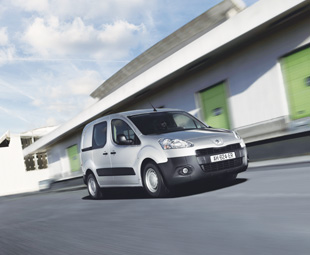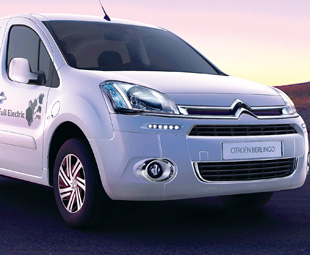Mean green electric machines

Two new electric vans – the Citroën Berlingo and the Peugeot Partner – were unveiled at the Hanover Motor Show in Germany during September. These brands are catching on to the plug-in vehicle trend in an effort to cut greenhouse gas emissions, and there are endless parallels between their two new vans; they even sport similar looks. And they don’t have much to compete with, their only alternative competitor being the Renault Kangoo ZE.
Citroën’s electric Berlingo, which forms a close fit with the company’s C-Zero and aims to set a new standard for the electric vans market, is set to be launched in the first half of 2013. Sister company Peugeot, with its Partner range now also including a 100 percent electric model, has too taken the next step in automobile development, and will launch its version in the second half of 2013.
These newcomers will offer business owners the opportunity to project a positive image and advertise their commitment to protecting the environment.
While both boast excellent fuel economy and low CO2 emissions, there has been no compromise on safety, driving pleasure or space. The load volumes of these electric newbies is among the best in their market segment and will meet the needs of customers looking for significant load capacity.
 The Berlingo has a load volume of up to 4,1 m3 and a payload capacity of 675 kg, and the Partner electric has a load volume of up to 3,7 m3 for the larger load length option (2,05 metres) with a payload capacity of up to 685 kg.
The Berlingo has a load volume of up to 4,1 m3 and a payload capacity of 675 kg, and the Partner electric has a load volume of up to 3,7 m3 for the larger load length option (2,05 metres) with a payload capacity of up to 685 kg.
The vans are sufficiently modular to load large objects, and there’s plenty of space in the front for a second co-driver as both models have a multi-flex bench seat that can accommodate three people upfront.
The vehicles are perfectly suited for nightly charges before heading out for their daily duties and deliveries. Both have normal and fast charging options, with the latter achieving an 80 percent charge in 30 minutes, allowing a range of up to 170 km.
The various parts of the electric powertrain are located under the bonnet or beneath the body shell to maximise load volume and carrying capacity. The electric drivetrains operate on two high-energy, lithium-ion battery packs and the electric motors have a maximum power output of 49 kW.
Innovative eco-driving is what one might say when referring to these electric vans. With their visible instrument panels and energy consumption indicators, there is constant assistance for the driver to adopt an economical driving style. Both have dual energy recovery: they can recover energy during deceleration and active braking, converting kinetic energy back into electrical energy.
Thanks to the single ratio gearbox installed in both models, drivers, passengers and goods can experience a smooth and quiet ride. The silence of the operation is a characteristic of electric vehicles and completes the experience. It’s the sound of clean transportation.
Published by
Focus on Transport
focusmagsa




